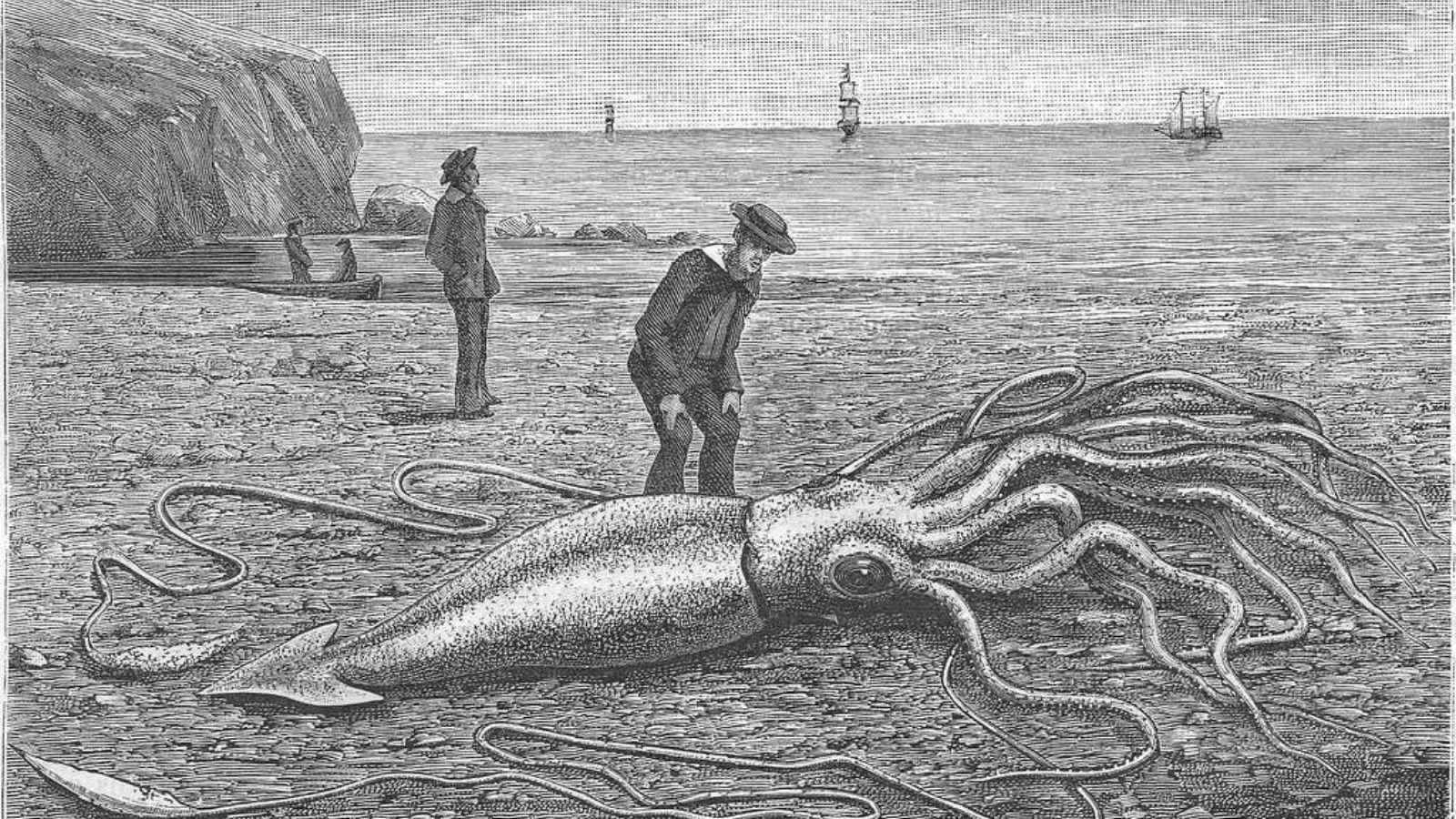The Kraken, a colossal sea monster from the depths of Norse mythology, has captivated human imagination for centuries. Described as a gigantic cephalopod, often compared to an octopus or squid, the Kraken was said to terrorize sailors, dragging entire ships and their crews to a watery grave. But beyond the tales and folklore, is there any truth to the legend of the Kraken? Let’s explore the evidence both for and against its existence.
The Legend of the Kraken
Originating from Scandinavian folklore, the Kraken was first documented in the 13th-century Icelandic sagas, notably in Örvar-Odds saga. Over time, it evolved in popular culture, becoming synonymous with terror on the high seas. Descriptions of the Kraken vary, but they often depict it as an enormous creature with long, twisting tentacles capable of wrapping around and sinking large ships.
In the 18th century, the Kraken was popularized in Europe through Erik Pontoppidan’s book Natural History of Norway. Pontoppidan described the Kraken as a beast so vast it was often mistaken for an island, only revealing its true form when it attacked ships.
Evidence For the Existence of the Kraken
Giant Squid Discoveries
- Real-Life Giants: The discovery of giant squids (Architeuthis dux), which can grow up to 43 feet (13 meters) long, lends some credibility to the Kraken legend. These creatures, rarely seen alive, are among the largest invertebrates on Earth. In 2004, the first footage of a live giant squid in its natural habitat was captured, confirming the existence of these elusive giants.
- Deep-Sea Behemoths: The colossal squid (Mesonychoteuthis hamiltoni), even larger than the giant squid, can reach lengths of up to 46 feet (14 meters) and possesses the largest eyes in the animal kingdom. Such enormous creatures, previously thought to be a myth, suggest that the ocean may still hide other unknown giants.
Historical Sailor Accounts
- Eyewitness Reports: Throughout history, numerous sailors and explorers have reported encounters with enormous sea creatures. In 1752, the French warship Alecton reportedly fought a giant squid off the coast of Angola. The sailors’ detailed descriptions of the creature match closely with what we know about giant squids today.
- Mystery Remains: In the 19th and early 20th centuries, several giant squid carcasses washed ashore, providing tangible evidence of massive, tentacled beings that could inspire the Kraken myth.
Misidentified Marine Life:
- Whale Carcasses: Some researchers propose that historical Kraken sightings could be misidentified whale carcasses. A decaying whale could resemble a giant, many-tentacled creature as it decomposes and is scavenged by other sea life.
- Ocean Phenomena: Natural phenomena such as large underwater volcanic eruptions or massive sea swells could have been mistaken for the thrashing of a colossal sea monster.
Evidence Against the Existence of the Kraken
Scientific Skepticism
- Lack of Physical Evidence: Despite the many stories and legends, there is no concrete evidence to support the existence of a creature as enormous and powerful as the Kraken. No remains, photographs, or reliable scientific recordings exist to substantiate the tales of a sea monster of such magnitude.
- Modern Understanding: With advancements in marine biology and oceanography, we now have a better understanding of deep-sea life. The largest known cephalopods, while impressive, do not possess the capability to sink ships or match the size described in Kraken legends.
Exaggeration and Myth-Making
- Human Imagination: Many Kraken stories come from a time when much of the ocean was unexplored and mysterious. Fear of the unknown, combined with natural human tendencies to exaggerate, likely played a significant role in the creation and perpetuation of the Kraken myth.
- Sailor’s Tales: Seafarers’ stories often grew in the retelling, with each account adding to the mystique and size of the Kraken. Over time, these tales transformed from possible encounters with large marine animals into the fantastical legends we know today.
Cultural Symbolism
- Representation of Nature’s Power: The Kraken can be seen as a symbol of the overwhelming and uncontrollable power of nature. Its portrayal as a monstrous sea creature represents humanity’s fear and respect for the vast, unknown depths of the ocean.
- Metaphor for Danger: In many ways, the Kraken serves as a metaphor for the dangers faced by sailors and the unpredictability of the sea. As a narrative device, it captures the peril and mystery of life at sea.
The Kraken straddles the line between myth and reality. While no definitive evidence confirms the existence of a creature as grandiose as the Kraken, the discovery of giant and colossal squids suggests that the oceans still hold secrets and marvels that could have inspired such tales. Whether the Kraken is purely a product of human imagination or rooted in ancient encounters with massive sea creatures, it remains a powerful symbol of the mysteries and wonders that lie beneath the waves.
As our understanding of the deep sea continues to evolve, who knows what new revelations may surface? For now, the Kraken remains an enigmatic blend of myth and the possibility that somewhere, in the vast, uncharted depths of the ocean, extraordinary creatures may still await discovery.
Do you have any experience with mysterious sea creatures? Share your story in the comments below!
